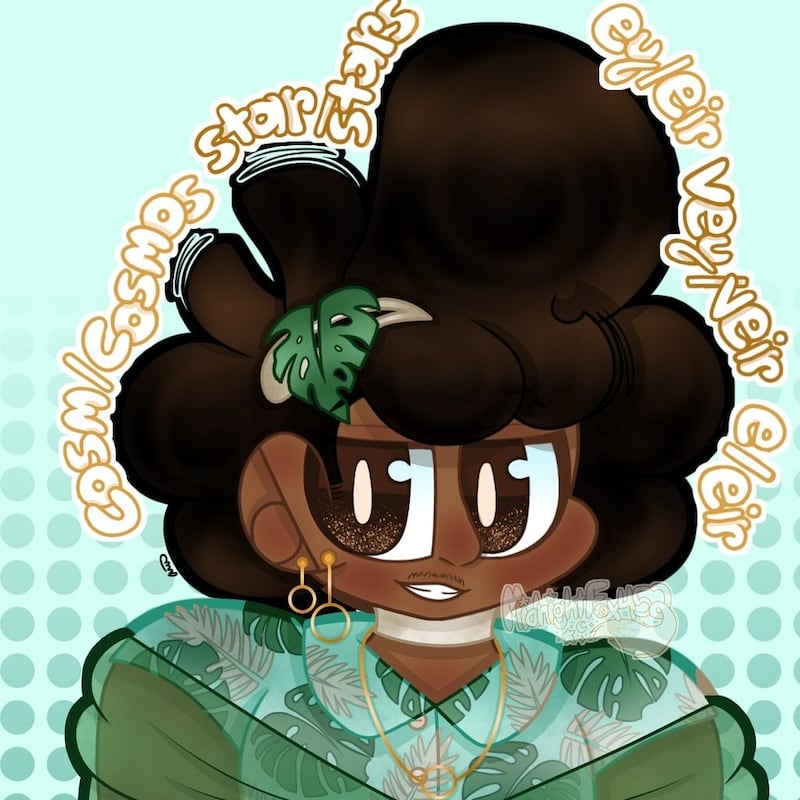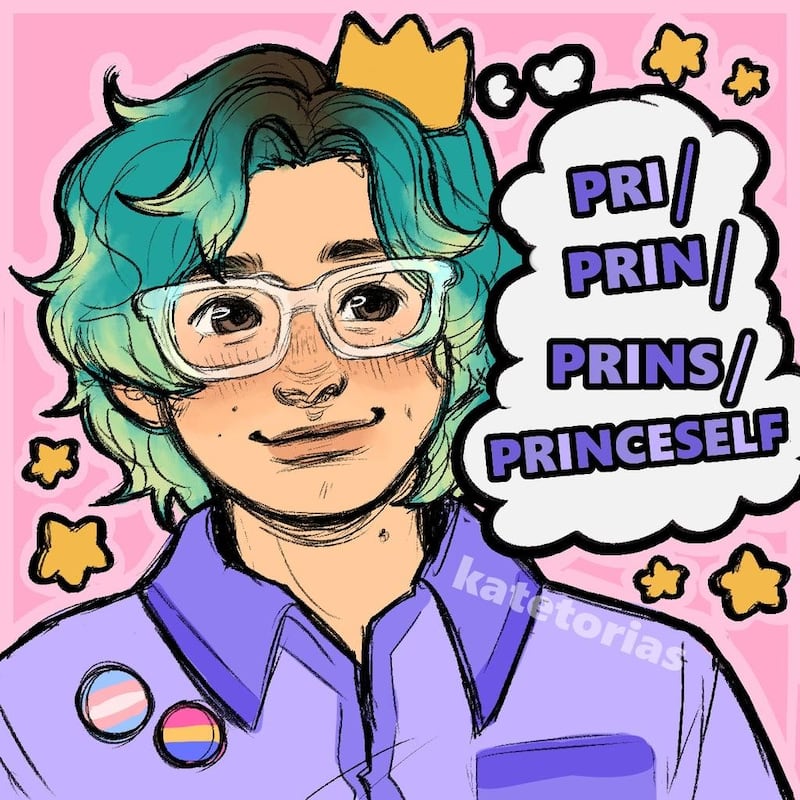A personal pronoun is a form of speech that stands in for a person or group of people. She is having opinions online; they are fighting in the comments; and, of course, as in the Prince song made famous by Sinéad O'Connor, "Nothing Compares 2 U."
Nonbinary pronouns – often the singular “they” and “them” – have also become widespread. The singer Sam Smith switched to nonbinary pronouns “after a lifetime of being at war with my gender”. (Their fellow singer Janelle Monáe says she sometimes regards herself as nonbinary, although she doesn’t have a pronoun preference.)
A neopronoun can be a word created to serve as a pronoun without expressing gender, like 'ze' and 'zir'. It can also be a 'noun-self pronoun', a type that can refer to animals – so your pronouns can be 'bun/bunself' and 'kitten/kittenself'
And then there are neopronouns. A neopronoun can be a word created to serve as a pronoun without expressing gender, like “ze” and “zir.” A neopronoun can also be a so-called noun-self pronoun, in which a preexisting word is drafted into use as a pronoun. Noun-self pronouns can refer to animals – so your pronouns can be “bun/bunself” and “kitten/kittenself.” Others refer to fantasy characters – “vamp/vampself,” “prin/cess/princesself,” “fae/faer/faeself” – or even just common slang, like “Innit/Innits/Innitself.”
How prevalent are neopronouns?
Not very – yet. A recent survey of pronoun use among 40,000 LGBTQ young people in the United States by the Trevor Project, a nonprofit dedicated to preventing suicide among queer and trans youth, found that one-quarter of them used nonbinary pronouns. (Participants were recruited from late 2019 through early 2020 by ads on social media.) Most said they used common pronouns like "he", "she" and "they." Just 4 per cent said they used neopronouns, including "ze/zir," and "fae/faer," often in combination with other pronouns.
Is this for real?
Yes. And around any leading-edge behaviour online, trolling, high jinks and bad faith collide indistinctly. For those unfamiliar with the culture surrounding neopronouns right now, it's likely impossible to distinguish between what's playful, what's deeply meaningful and what's people being mean.
Many neopronoun users are dead serious and are also part of online communities that are quick to react swiftly to offences. They are deeply versed in the style and mores of contemporary identity politics conversations. A popular Twitch streamer who goes by AndiVMG recently apologised after jokingly tweeting that her pronouns were "bad/af", which led many neopronoun users to accuse her of transphobic invalidation of their identities. AndiVMG did not respond to a request for comment for this article but wrote on Twitter, "It wasn't meant to mock people who use neopronouns. However I have since educated myself on the matter and spoken to people who use neopronouns and I see why what I said was hurtful."
Critics persist. "I'm not going to call u kitty/kittyself or doll/dollself just bc u think its cool," one TikTok user wrote in a video caption. "Pronouns are a form of identity not an aesthetic." But what's the difference between an aesthetic and an identity, anyway?

How do you know someone's pronouns?
Neopronoun users may publish strict boundaries and preferences around behaviours, enthusiasms and hatreds. Many of them have defined lists of behaviours they find unacceptable around privacy or cruelty – sometimes referred to as "DNI" lists, short for "do not interact" – which they often outline in posts on Carrd, a service that makes single-page websites.
Carrd grew in scope during the protest movements of 2020; these days, many of its more than 2 million pages are used primarily for expressions of fandom and personhood. So a social-media bio will often include a link to an identity resume on Carrd, often with a pronoun usage guide. (One sample: “Bug likes bugs.” “Those things belong to Bug.” “Bug wants to work by Bugself.”)
One Carrd explains neopronouns at length. In its FAQ section, it provides a response used often in the neopronoun community when talking to people who claim neopronouns "aren't real words": "Yes, literally every word is made up! Neopronouns are real because they carry meaning and are understood by others."
Many people who use neopronouns don't just use one set. They select a handful and show off their collections on websites like Pronouny.xyz, a site that provides usage examples for neopronouns. Users make their own Pronouny pages, like this one, which includes xe/xem/xyr, moon/moonself, star/starself, bee/beeself and bun/bunself. "Sorry if I have too many pronouns," the page's creator wrote. "You can use just one set or just they/them if they're too many!!"
Why are neopronouns so heated right now?
Online conversation gathered steam in November with some contentious TikToks about neopronouns. ("Bro, neopronouns are gonna break the English language," said a young TikToker in November who goes by @Pokebag in a video that racked up hundreds of thousands of likes.)
But noun-self pronouns are not exactly new; they emerged from an online hotbed for avant-garde ideas around gender expression. "The noun-self pronouns emerged on Tumblr starting around 2012, 2013," says Jason D'Angelo, a linguist and queer scholar who has a substantial following on TikTok for videos about gender and identity issues. "They're a unique way of exploring people's understanding of their own gender."
D’angelo (who takes the nonbinary references themself) says the social-media discourse around neoprounouns “died off” to some extent around 2014 before resurfacing recently; they theorise that increasing interest may be a result of the coronavirus forcing people indoors.
“When we go about in the world, we have to perform gender in ways that are typical and normative over and over and over again, but because a lot of us have been in our houses for the last year, we haven’t had to perform them,” they say. “So the link between the performance and the self is weakened.”

I think this is weird or not okay!
That's okay. Horror at noun-self pronoun usage is so common that it has spurred a meme in the neopronoun community. In it, people compare neopronouns to all kinds of things we take for granted. Neopronoun users say new terms allow them to engage with gender – or other aspects of identity – in a way that aligns with how they feel. In some cases, neopronouns are met with frustration because their use shows people divorcing themselves from continuing, unfinished gender business between men and women. Neopronoun users are trying to "construct something new and different that doesn't have the same societal issues", D'angelo says, as the traditional gender binary: "It's almost like gender abolitionist."
How can a pronoun address identity beyond gender?
Considering their Tumblr origins, it's not surprising that many noun-self pronoun user interests' overlap with fandoms, including anime, K-pop and Minecraft YouTuber stars like Dream. Intense fandoms are rife with neopronoun use. Neopronouns are also prominent among some communities of young people who identify as neurodivergent, which includes diagnoses or descriptions like Asperger's syndrome and autism. D'Angelo said that one reason people on the autism spectrum may use neopronouns could be "because they feel like their relationship with gender is different than the neurotypical one". Neopronouns give people who feel different from the rest of the world a way to avoid all its boxes at once.
But pronouns are permanent and must never change!
In his book What's Your Pronoun? Dennis Baron, an English professor at the University of Illinois, describes a series of attempts to create a nonbinary pronoun. (In 1808 the poet Samuel Taylor Coleridge suggested "it", which flopped; it is now beginning to have a small moment in the sun.) In all, Baron identifies more than 200 gender-neutral pronouns proposed between the 19th century and the 1970s.
As nonbinary identities have become more widely accepted in recent decades, so did the requisite pronouns. In 2015, Harvard began allowing students to choose their preferred pronouns from a list that included gender-neutral terms like “ze, hir and hirs”, as did administrators at the University of Tennessee – before that university withdrew a guide to pronouns, amid conservative pushback.
Countries including Australia, Iceland and Argentina have given citizens the option to use nonbinary passports, and several US states have done the same with driver’s licences, including California and Oregon.
What do neopronoun users say about all this?
We wanted people to tell us in their own words about why and how they used neopronouns. Because they are very young, we agreed to let them use only their first names. "Being neurodivergent, I tend to perceive how a word makes me feel rather than just seeing the word," the noun-self user Gum, who is 13, writes in a direct message on Twitter. "I chose my bink/bonk pronouns because they remind me of clowns. Clowns and harlequin dolls make me very happy."
“Being neurodivergent, you are more likely to have a complicated relationship with your gender identity and expression, and pronouns are just one part of gender expression,” Elijah, who is 17, writes. “When I first encountered them I actually didn’t agree with them,” writes one 15-year-old neopronoun user. “Eventually I met a lot of people online who used them and decided to educate myself further and realised that they were perfectly valid and just another way of expressing your gender to others. I chose the ones I use as I feel a connection to them, eg vamp/vamp pronouns – I feel a connection to vampires and that in a way feels connected to my gender.”

What are the limits of neopronouns?
Limits? What are those? Some people even use emojis. A 2018 post on the Tumblr emojiselfpronouns explains how the paw emoji may be used as a pronoun. And how would you say that anyway? "They were not meant to be said in the first place," the post explains. Emoji-self pronouns "are meant to be fun, and are meant to stand against what we see as 'normal' and 'typical' pronouns". But there actually are some limits. Neopronoun users have shut down the notion of using terms related to Black Lives Matter, like "BLM", as neopronouns, arguing that it is inappropriate for people to use these terms in this way. Others have claimed that using "fae" as a neopronoun is culturally appropriative from pagan communities. (This claim, as they say, is disputed.)
And not everyone in the wider queer community supports noun-self pronouns. "As a trans man, I think neopronouns are getting way out of hand," Asa Pegler, a 17-year-old, said in a TikTok from November. In an interview, Pegler specifies that his beef is not with gender-neutral neopronouns. He feels that elevating objects and animals to human-pronoun levels is dismissive. "I couldn't stomach why anyone would want to identify as an object?" Pegler writes in an Instagram direct message. "They dehumanise us as trans people," he adds. "We are people! Not objects or animals. So that's why I stated that they are out of hand, because they make us look like a bit of a joke." The neopronoun community comprises mostly internet-native young people and is agile when it comes to facing down criticism and mockery.
Social-media posts affirming the validity of neopronoun identities are a constant refrain: "If you use neopronouns, you are extremely valid and I love you," one person writes on Twitter. "Neopronouns are so valid and if you disagree hard block me rn /srs," another writes. "There will always be people IRL that will have something negative to say, whether it's because they just don't understand or they are genuinely just a bigot," Elijah, the neopronoun user, writes. "They know nothing about your personal experiences and have no business policing your identity." – New York Times, with additional reporting





















